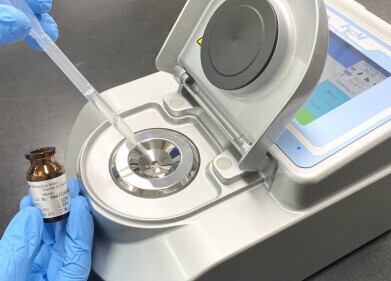Laboratory Products
How is Food Analysis Changing?
Jan 04 2022
Safety is the ultimate priority in the food and beverage sector, and next-generation technology has an important role to play when it comes to protecting consumers and meeting strict industry standards. Below, we spotlight some of the most exciting advances in food analysis.
Next-generation microbiological tests
Microbiological assays are the most common tests, with instruments used to detect a range of pathogens, including E.coli, Salmonella and Listeria. These microbiological tests ensure food destined for supermarket shelves is safe to consume.
Determining nutritional value
Many countries enforce strict rules when it comes to nutritional transparency. Food analysis tests are used to unlock nutritional data which is included on packaging. Kjeldahl or Dumas combustion methods are used to determine protein content while advanced desktop NMR techniques are used to calculate fat content in just 20 seconds. Enzyme digestion methods are used to quantify fibre and drying ovens offer data on water and ash levels.
Raman spectroscopy
Raman spectroscopy is a gold-standard method for analysing glucose, fructose and sucrose levels in soft drinks. The chemical analysis technique is fast and non-destructive, with a laser source used to scatter light and calculate sugar content at granular levels.
Geographic authenticity testing
Consumers are protected by strict laws and food testing plays an important role in ensuring customers get what they pay for. For example, Stable Isotope Analysis is used to ensure Sicilian lemons originate in Sicily. Other examples include tests to confirm Bordeaux wine is from Bordeaux or Parma ham is from Parma. These types of tests are fundamental to preventing food fraud and protecting consumer interests.
Species of origin
Advanced PCR (Polymerase Chain Reaction) instruments are used to verify that frozen beef dishes contain beef, not other substitutes such as horse meat. Next-generation sequencing (NGS) is also useful for determining different fish and meat species, with the latest instruments offering the capacity to simultaneously test for multiple species.
Detecting allergens
Peanuts, gluten, soya and egg can cause serious health issues for consumers with allergies. Food analysis methods such as ELISA (Enzyme Linked Immunosorbent Assay) and PCR are used to screen food and detect potential allergens.
Australian-based food and drink testing services company ALS is continually developing new technologies to make these processes faster, easier and more cost efficient. Tim Lumb, the company’s Chemistry Technical Manager, is responsible for exploring new methods and driving innovation. The ultimate goal is to help manufacturers produce products that are safe, nutritious and authentic.
Find out more about the latest technologies from ALS, including the highly specialised Multi Collector ICP-MS hybrid mass spectrometer that combines inductively coupled plasma ionisation with an ultra-precise magnetic sector multicollector mass spectrometry in ‘Food Analysis has Never Been so Challenging or Exciting’.
Digital Edition
Lab Asia 31.2 April 2024
April 2024
In This Edition Chromatography Articles - Approaches to troubleshooting an SPE method for the analysis of oligonucleotides (pt i) - High-precision liquid flow processes demand full fluidic c...
View all digital editions
Events
Apr 28 2024 Montreal, Quebec, Canada
May 05 2024 Seville, Spain
InformEx Zone at CPhl North America
May 07 2024 Pennsylvania, PA, USA
May 14 2024 Oklahoma City, OK, USA
May 15 2024 Birmingham, UK


















